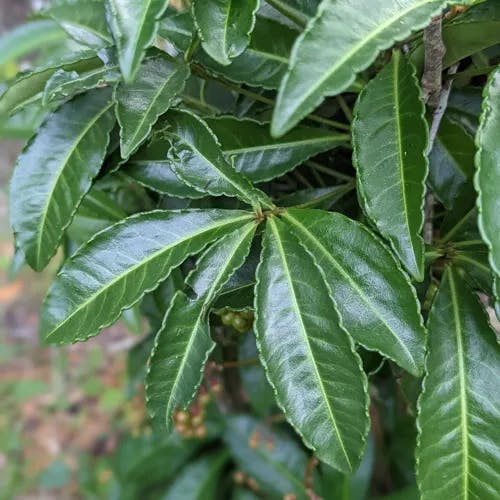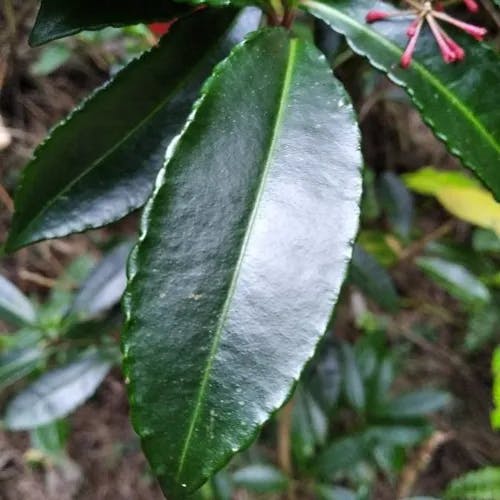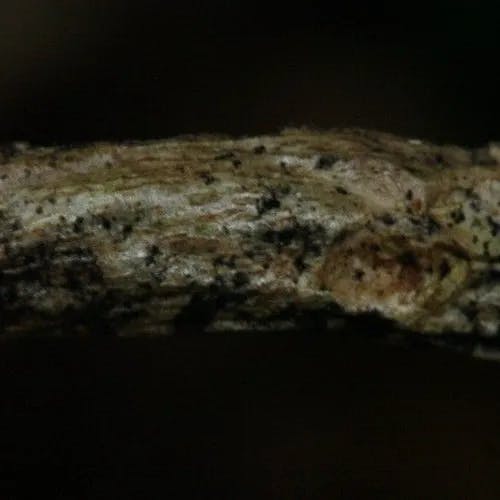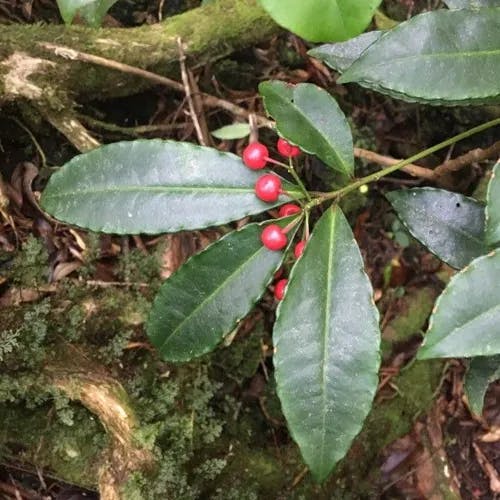Ardisia crenata, commonly known as Coralberry, is a small evergreen shrub native to East Asia. It is particularly prevalent in Japan, Korea, and China. The plant is characterized by its dark green, glossy leaves which are distinctly serrated or 'crenate'. These leaves are typically 5-8 cm long and 2.5-3.5 cm wide. Coralberry produces clusters of small, star-shaped flowers that are pink to white in color. These flowers usually bloom in late spring to early summer. Following the flowering period, the plant bears bright red berries, hence the common name Coralberry. The berries are approximately 5 mm in diameter and are often retained on the plant throughout winter. These fruits are not only ornamental but also serve as a food source for various bird species. Ardisia crenata typically grows to a height of 1-1.5 meters, making it suitable for small gardens or as a houseplant. It prefers well-drained soil and partial to full shade, although it can tolerate a range of conditions. Despite its ornamental appeal, Coralberry is considered an invasive species in some regions due to its ability to spread rapidly. It is also known to be resistant to deer, adding to its survivability in various environments. In terms of symbolism, the Coralberry plant does not have a universally recognized meaning. However, in some cultures, its persistent berries are seen as a symbol of resilience and endurance. Growing Ardisia crenata is relatively easy, making it a popular choice among gardeners. However, it is important to note that all parts of the plant are poisonous if ingested, so caution should be exercised around children and pets. In conclusion, Ardisia crenata or Coralberry is a versatile plant with distinctive features and easy care requirements. However, its invasive nature and toxicity should be considered when choosing it for a garden or home setting.
0
0












